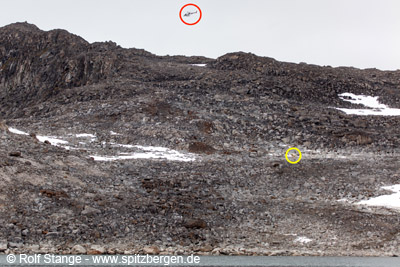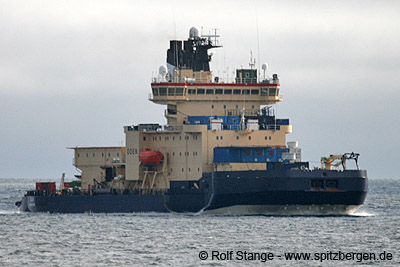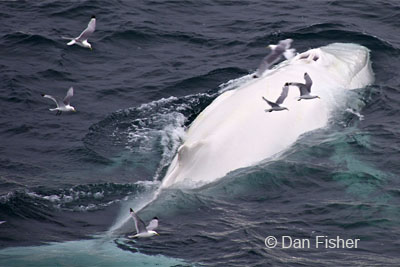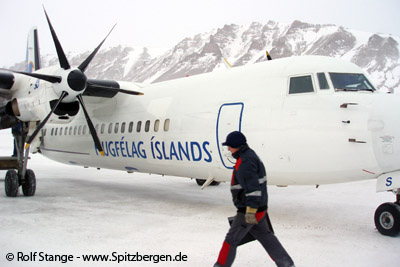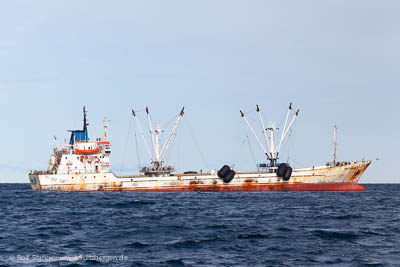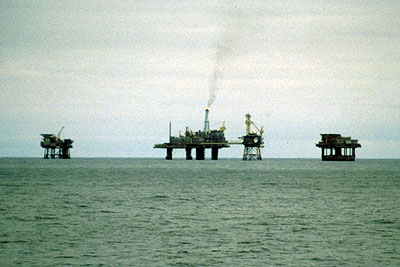-
current
recommendations- Liefdefjord
New page dedicated to one of Spitsbergen's most beautiful fjords. Background information and many photos.
- New Spitsbergen guidebook
The new edition of my Spitsbergen guidebook is out and available now!
- Liefdefjord
New page dedicated to one of Spitsbergen's most beautiful fjords. Background information and many photos.
Page Structure
-
Spitsbergen-News
- Select Month
- May 2025
- April 2025
- March 2025
- February 2025
- January 2025
- December 2024
- November 2024
- October 2024
- September 2024
- August 2024
- July 2024
- June 2024
- May 2024
- April 2024
- March 2024
- February 2024
- January 2024
- December 2023
- November 2023
- October 2023
- September 2023
- August 2023
- July 2023
- June 2023
- May 2023
- April 2023
- March 2023
- February 2023
- January 2023
- December 2022
- November 2022
- October 2022
- September 2022
- August 2022
- July 2022
- June 2022
- May 2022
- April 2022
- March 2022
- February 2022
- January 2022
- December 2021
- November 2021
- October 2021
- September 2021
- August 2021
- July 2021
- June 2021
- May 2021
- April 2021
- March 2021
- February 2021
- January 2021
- December 2020
- November 2020
- October 2020
- September 2020
- August 2020
- July 2020
- June 2020
- May 2020
- April 2020
- March 2020
- February 2020
- January 2020
- December 2019
- November 2019
- October 2019
- September 2019
- August 2019
- July 2019
- June 2019
- May 2019
- April 2019
- March 2019
- February 2019
- January 2019
- December 2018
- November 2018
- October 2018
- September 2018
- August 2018
- July 2018
- June 2018
- May 2018
- April 2018
- March 2018
- February 2018
- January 2018
- December 2017
- November 2017
- October 2017
- September 2017
- August 2017
- July 2017
- June 2017
- May 2017
- April 2017
- March 2017
- February 2017
- January 2017
- December 2016
- November 2016
- October 2016
- September 2016
- August 2016
- July 2016
- June 2016
- May 2016
- April 2016
- March 2016
- February 2016
- January 2016
- December 2015
- November 2015
- October 2015
- September 2015
- August 2015
- July 2015
- June 2015
- May 2015
- April 2015
- March 2015
- February 2015
- January 2015
- December 2014
- November 2014
- October 2014
- September 2014
- August 2014
- July 2014
- June 2014
- May 2014
- April 2014
- March 2014
- February 2014
- January 2014
- December 2013
- November 2013
- October 2013
- September 2013
- August 2013
- July 2013
- June 2013
- May 2013
- April 2013
- March 2013
- February 2013
- January 2013
- December 2012
- November 2012
- October 2012
- September 2012
- August 2012
- July 2012
- June 2012
- May 2012
- April 2012
- March 2012
- February 2012
- January 2012
- December 2011
- November 2011
- October 2011
- September 2011
- August 2011
- May 2011
- April 2011
- March 2011
- February 2011
- January 2011
- December 2010
- November 2010
- September 2010
- August 2010
- July 2010
- June 2010
- May 2010
- April 2010
- March 2010
- February 2010
- November 2009
- October 2009
- August 2009
- July 2009
- June 2009
- May 2009
- April 2009
- March 2009
- February 2009
- January 2009
- December 2008
- November 2008
- October 2008
- August 2008
- July 2008
- June 2008
- May 2008
- April 2008
- March 2008
- February 2008
- April 2000
- Select Month
-
weather information
-
Newsletter

| Guidebook: Spitsbergen-Svalbard |
Home → November, 2012
Monthly Archives: November 2012 − News & Stories
Low flight over Polar bear
Sysselmannen and Norwegian coastguard are currently criticized for a low flight over a group of walrusses on Nordaustland, in the strictly protected nature reserve Nordaust Svalbard. A similar event involving a Polar bear has now been reported. On July 11, a group of tourists of MS Quest had boarded 5 Zodiacs to cruise along drift ice southeast of Sjuøyane (north of Nordaustland). When a swimming Polar bear was seen from the ship, the Swedish expedition called the boats together to avoid disturbance: following swimming Polar bears with any motorized vehicles is strictly forbidden (and would without any doubt be ruthless).
A nearby small aircraft operated by the coastguard caught the VHF conversation between the guides and the ship. The crew of the aircraft decided to check what was going on, resulting in low flights over the Zodiacs and the Polar bear.
The expedition leader believed this to be a unique incident, until news of the low flight over walrusses surfaced recently, and then decided to write a report. In a first reaction, the Sysselmannen announced that the Zodiac operation of the tourists might have to be checked for potential disturbance of the bear. The factual disturbance of the protected animal by the coastguard aircraft does not seem to be a matter of great interest for the Sysselmannen, who is the highest representative of the Norwegian government in Spitsbergen.
The coastguard considers themselves a general police authority for the waters around Spitsbergen, which are under Norwegian legislation. According to other views, the duty of the coastguard is, in Spitsbergen waters, exclusively to control fishing vessels. Other control may be carried out in individual cases, where the need may arise, but generally, it is the Sysselmannen who controls tourism in Spitsbergen. Now it seems as if it is the duty of tourism – the closest thing to the “public” in the relevant areas – to control the authorities in the field …
Low flight over Polar bears: An incident in Holmiabukta, photographed by the author on July 31, 2010, when the presence of several bears in Holmiabukta was generally known. The helicopter is marked with a red circle, a Polar bear with a yellow circle*. Click here for a larger version of this image.
Amendment (December 04, 2012): Regarding the photo above, the Sysselmannen stated that there was no helicopter flight on behalf of the Sysselmannen in the area in question on July 31, 2010. According to the Sysselmannen, the helicopter in the photo was possibly chartered by a private party.
Source: Svalbardposten (47/2012)
Flying low over walrusses: judicial aftermath
The low flight of an official airplane over a group of walrusses, which was both very inconsiderate and against valid rules, has been reported before on these pages (see October news). The incidence now seems to have a judicial aftermath. The affair has been reported to the Norwegian office for police matters. The point of the report is, however, not the actual flight, but the handling of further internal communication. Following regulations and common routine, relevant emails should have been published, but were not. This gives rise to the suspicion that it was tried to keep the incident away from public attention. According to the official explanation, this was not the case, an explanation that will hardly surprise.
The flight was observed by a group of tourists who finally reported about the incident to media.
Peaceful observation of a group of walrusses. Use of aircraft close to such a herd is neither allowed nor animal friendly.
Source: Sysselmannen.
Northern Sea Route: more traffic
Ship traffic through the Northern Sea Route, also known as Northeast Passage, has increased tenfold since 2010. Two years ago, the passage was used by only 4 vessels, compared to 46 in 2012. This season’s last 2 ships, both Finnish icebreakers, are still on their way.
Most vessels that used the Northern Sea Route in 2012 were cargo ships transporting oil, gas and fuels, followed by ore and coal. The route was used for the first time to transport LNG (liquified gas) in 2012, when a Norwegian vessel sailed from Hammerfest to Japan.
The Northeast Passage was completed for the first time in 1878/79 by the Swedish explorer Adolf Erik Nordenskjöld. It is about 20 days shorter than the common route through the Suez Canal.
The Swedish icebreaker Oden near Spitsbergen.
Source: Barentsobserver
White Humpback whale
The sighting of a rare white Humpback whale in Hinlopen Strait in August is getting big on various media around the world. The lucky photos that Dan Fisher, mate and engineer on board SV Antigua, managed to get, have by now been sold through agencies, appeared on several websites and made it onto north American television.
Apart from the white Humpback whale seen this summer in Spitsbergen, only two more animals of this rare kind are known so far, an adult and a calf, both seen off Queensland, Australia.
Click here for a larger version of the photo below.
The now famous white Humpback whale, photographed on 11 August 2012 by Dan Fisher.
Mercury in Polar bear liver
Polar bears can have high concentrations of heavy metals and other long-lived environmental toxins in their tissue. These toxins come from industry and agriculture in lower latitudes, are transported by air and sea currents even to the remotest parts of the Arctic where they are taken up in the food chain, finally contaminating those who are at its top: Polar bears and birds including Glaucous gulls. Consequences include negative impacts on reproductive and immune system and general health decline.
A new study has shown different levels of mercury concentration in Polar bear liver in different parts of the Arctic, from Alaska through Canada to Greenland. The reason for the regional differences is believed to be different species in the lower part of the food chain: plancton species that are responsible for the incorporation of mercury into the food chain.
There are no data from Spitsbergen, where Polar bears are protected and Polar bear liver is accordingly not available for sampling.
Mercury sources include coal power plants with bad filter systems.
Polar bears: as if their life was not already difficult enough without mercury.
Source: Norwegian Polar Institute
East Greenland: flights to Scoresbysund
Scheduled flights to Constable Point, the little airfield near the settlement Ittoqqortoormiit (Scoresbysund) in northern East Greenland, will be more complicated and expensive in the future. The Greenlandic government has decided to terminate the contract for the triangle flight between Reykjavik (Iceland), Kulusuk (near Ammassalik, southern East Greenland) and Constable Point. Instead, there will be a flight connection between Constable Point and the west coast of Greenland. Locals expect problems for the local community: more or less easy and affordable transport from Scoresbysund to Europe has been an important lifeline during recent decades. Amongst others, a significant drop of numbers in tourism is expected. The number of tourists visiting Ittoqqortoormiit is still not large, but economically important for the community.
This will also implicate changes to our trips to Scoresbysund in 2013.
The little airfield of Constable Point, near Ittoqqortoormiit (Scoresbysund).
Snow cover in the arctic on the decrease
The snow cover in the Arctic is shrinking more quickly than predicted. In 1979, the beginning of the records, about 9 million square kilometres of arctic land were snow covered during the spring. Until now, the figure has shrunk to a mere 3 million square kilometres, a loss rate of 21.5 % per decade. This is more than scientists had expected.
The larger share of snow-free ground absorbs sun radiation, turning it into warmth, rather than reflecting it back into space, as snow would do. The result is a positive feedback: a warmer atmosphere leads to less snow, which again results in a further warming of the atmosphere. In areas with high accumulation of biomass, such as Siberia and parts of Canada and Alaska, higher soil temperatures will additionally lead to increased methane emissions from the ground. Methane is a very aggressive greenhouse gas.
Snow-rich tundra in Woodfjord, mid June 2010.
Fishery zone around Spitsbergen
In September, a Norwegian coastguard ship brought a German trawler up near Hopen. The fishing ship had too much haddock in its cargo. The fishing company got a fine of 55000 NOK (ca. 7500 Euro), but did not accept the fine.
The point is not the economically irrelevant fine, but the principal question of the fishery zone around Spitsbergen: is the Spitsbergen Treaty valid in the 200 mile zone, which otherwise gives exclusive economical rights to the sovereign state? The Norwegian answer is a clear no: according to Norwegian authorities, the Treaty, which gives all signatory countries and their citizens equal rights of access and economic use of natural resources, is valid only within the 12 mile zone. According to this viewpoint, Norway has exclusive rights within the 200 mile zone, outside the 12 mile zone. Most countries do, however, agree, that the Spitsbergen Treaty, which is still valid, does not give Norway exclusive rights to any maritime area. The clear purpose of the Treaty, signed in 1920, was to give all signatories equal access under Norwegian administration. The German ship owner, “Deutsche Fischereiunion”, is now prepared to take this question of principal importance to Norwegian courts.
Russian trawler off Hornsund. Its presence is based on the Spitsbergen Treaty.
Source: Svalbardposten (4412)
Norwegian foreign minister about arctic oil and gas
The Norwegian foreign minister Espen Barth Eide has recently said clearly what he thinks about the future of arctic oil and gas exploitation. According to him, the question of environmental protection is restricted to a solely technical issue, but without further political relevance. The idea of leaving arctic oil and gas in the ground is not a relevant question.
The following quotations (translated from German) are sufficient to get an understanding of the message of the Norwegian minister:
- “The exploitation of arctic resources will take place.”
- “If you drill responsibly, then there should not be any problems.”
- “Some people have the wrong perception, that the Arctic is a global heritage as the Antarctic.”
- “We do not need specific regulations as in Antarctica. The region is not unique, compared to other open sea areas.”
Oil riggs in the North Sea.
The complete interview can be read in German on Spiegel Online..
News-Listing live generated at 2025/May/02 at 21:50:01 Uhr (GMT+1)
